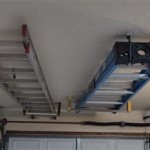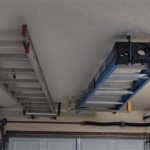How Big Should a Garage Door Be?
Determining the appropriate size for a garage door is a crucial step in the construction or renovation of a residential or commercial property. The correct garage door size ensures ease of access, adequate protection for vehicles and stored items, and enhances the overall functionality of the garage. Ignoring the importance of proper sizing can lead to difficulties in maneuvering vehicles, potential damage to the property, and restrictions on the types of vehicles or equipment that can be stored within the garage. Therefore, careful consideration of several factors is necessary to determine the optimal garage door dimensions.
The standard dimensions for garage doors are often the starting point for many homeowners and builders. However, relying solely on these standard sizes might not always be the most suitable approach. Individual needs and specific usage requirements should be assessed to ensure the chosen door size provides optimal convenience and utility. This article will explore the key considerations involved in determining the appropriate size for a garage door, focusing on standard dimensions, vehicle size, future needs, and relevant building codes.
Understanding Standard Garage Door Sizes
The concept of standard garage door sizes provides a useful framework for planning and construction. These standard dimensions have evolved to accommodate the most common vehicle types and garage configurations. Understanding these sizes is the first step in determining whether a readily available option will suit the specific requirements or whether a custom solution is necessary.
For single-car garages, the most common standard width is 8 feet, and the most common standard height is 7 feet. These dimensions allow for comfortable entry and exit for most standard passenger vehicles. However, 9-foot wide doors are also frequently used, providing added clearance for larger vehicles or for individuals who require additional space to maneuver while entering or exiting the garage.
Double-car garages typically utilize doors that are 16 feet wide and 7 feet high. This size accommodates two standard-sized vehicles parked side-by-side. Similar to single-car garages, an 8-foot height is also sometimes preferred, especially for accommodating taller vehicles such as SUVs or trucks. The specific height chosen will depend on the types of vehicles that will regularly be parked inside the garage.
While 7 feet is the most common standard height, 8 feet and even 9 feet tall garage doors are becoming increasingly popular. These taller doors offer more vertical clearance, allowing for storage of items on the roof racks of vehicles or accommodating specialty vehicles. The choice of a taller door should be carefully considered, taking into account the overall aesthetic of the house and potential structural modifications required to accommodate the increased height.
It is important to remember that manufacturers may offer slight variations within these standard dimensions. Before making a final decision, it is recommended to consult with a garage door professional to confirm the exact dimensions available from different manufacturers and to ensure the chosen size is compatible with the existing or planned garage opening.
Assessing Your Vehicle Size and Usage Requirements
The size and type of vehicles that will be housed within the garage are arguably the most critical factors in determining the appropriate garage door size. Accurately assessing the dimensions of current and potential future vehicles will ensure that the chosen door provides adequate clearance and prevents accidental damage to the vehicles or the garage structure.
Begin by measuring the width and height of the largest vehicle that will regularly use the garage. This should include any protruding features such as side mirrors or antennas. Add at least 12 inches to the width measurement to allow for sufficient maneuvering space. For the height, consider any roof racks, cargo carriers, or other accessories that may add to the overall height of the vehicle. Again, add at least 6 inches of clearance to ensure comfortable entry and exit.
If the garage will be used to store recreational vehicles, boats, or other oversized equipment, the door size must be adjusted accordingly. These larger items often require significantly wider and taller doors than standard vehicles. It is also important to consider the turning radius required to maneuver these items into and out of the garage.
Beyond vehicle size, consider the other ways the garage will be used. Will it be used as a workshop? Will it include storage shelves or cabinets along the walls? These factors can impact the usable width of the garage and may necessitate a wider door to compensate for the reduced space. If the garage is used as a workspace, consider the size of materials and equipment that will be moved in and out, such as lumber, machinery, or large tools.
Furthermore, consider the experience level of the individuals who will be operating the vehicles within the garage. Less experienced drivers or those who struggle with spatial awareness may benefit from a larger door that provides more room for error. It is always preferable to err on the side of caution and choose a slightly larger door than initially anticipated to avoid potential accidents or damage.
Considering Future Needs and Building Codes
While current vehicle size and usage requirements are important, it is equally crucial to consider future needs and any applicable building codes or regulations. Planning for potential future vehicle upgrades, changes in lifestyle, and compliance with local building requirements will ensure that the chosen garage door size remains adequate for years to come.
Anticipate potential changes in vehicle ownership. Will a larger truck or SUV be purchased in the future? Will the garage be used to store a boat or recreational vehicle at some point? Planning for these potential future needs will prevent the need for costly renovations or replacements down the line. Even if specific future plans are uncertain, choosing a slightly larger door size than currently required offers a degree of flexibility and adaptability.
Local building codes often dictate minimum garage door sizes, particularly in new construction or renovation projects. These codes are designed to ensure adequate access for emergency vehicles, such as fire trucks, and to promote overall safety. It is essential to consult with local building officials or a qualified contractor to determine the applicable codes and regulations in a specific area. Failure to comply with these codes can result in fines or delays in project completion.
Additionally, consider the aesthetic impact of the garage door size on the overall property. A garage door that is disproportionately large or small compared to the house can detract from the curb appeal and potentially reduce the property value. Consult with an architect or designer to ensure that the chosen door size is visually harmonious with the existing architecture. The aesthetic aspect is particularly important when considering non-standard sizes or unusual configurations.
Finally, the type of garage door chosen can also influence the required opening size. Sectional doors, roll-up doors, and swing-out doors each have different space requirements and operational clearances. Researching the different types of doors and their specific needs will help to determine the appropriate opening size and prevent any unforeseen complications during installation. Consulting with a garage door specialist can provide valuable insights into the different door types and their suitability for specific requirements.
Properly planning the garage door size is an important decision that requires careful consideration of multiple factors. While standard sizes provide a useful starting point, individual needs, vehicle dimensions, and future usage requirements should be carefully assessed to ensure the chosen door size provides optimal functionality, convenience, and long-term value.

Residential Garage Doors Available Sizes Garaga

Understanding Standard Garage Door Sizes Premium Living Victoria

What Size Garage Door Do I Need Guide Easy Open
.jpg?strip=all)
Garage Door Sizes And Measurements Up Over Sectional Roller Shutter Side Hinged Garages

How To Measure A Garage Door Height Guide

What Size Overhead Sectional Garage Door Should I Buy Armrlite Doors

How Thick Should A Garage Door Be Tip Top Doors Repair Raleigh

What Measurements Should I Look At Before Purchasing A New Garage Door Systems Metro Boston

Standard Garage Door Sizes For Homes A1 Services

How Much Headroom For My Garage Door Residental Doors
Related Posts








